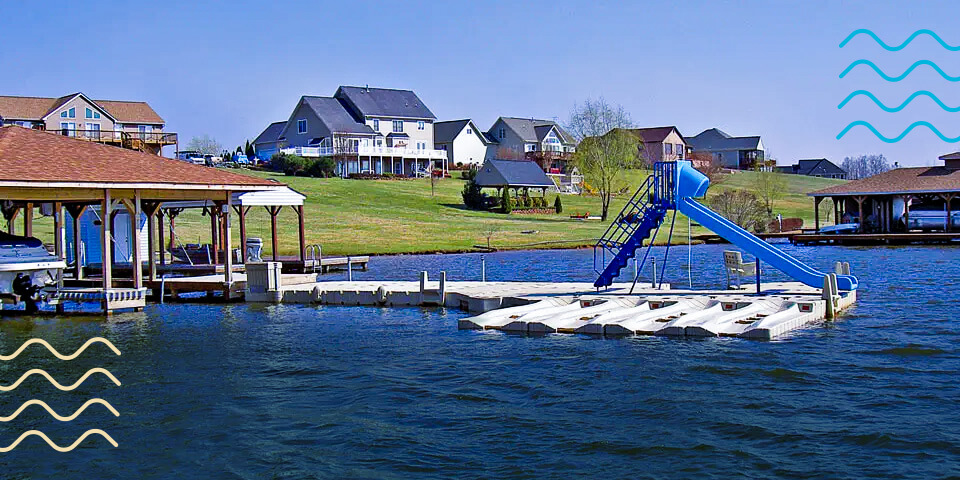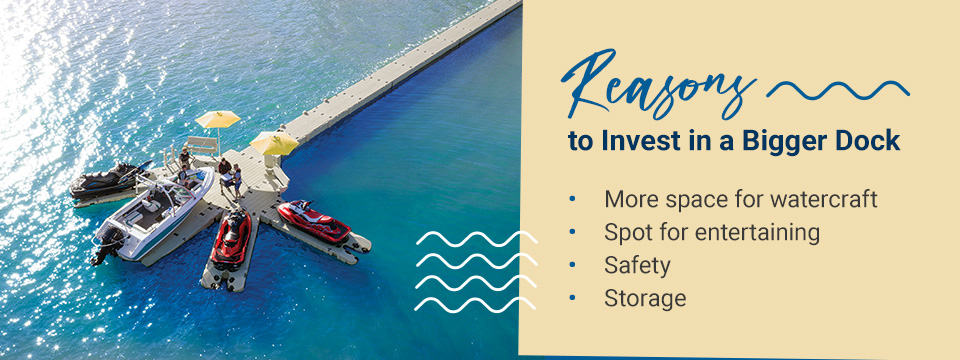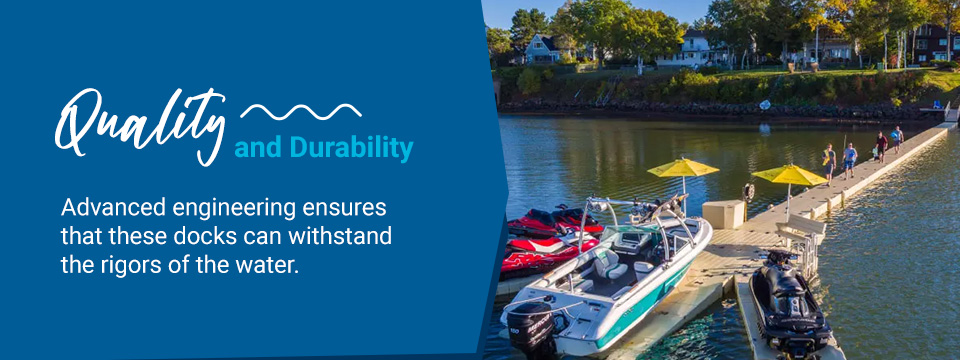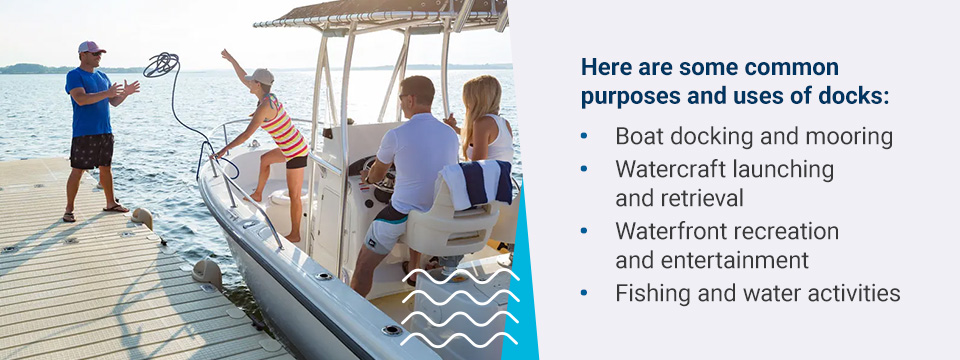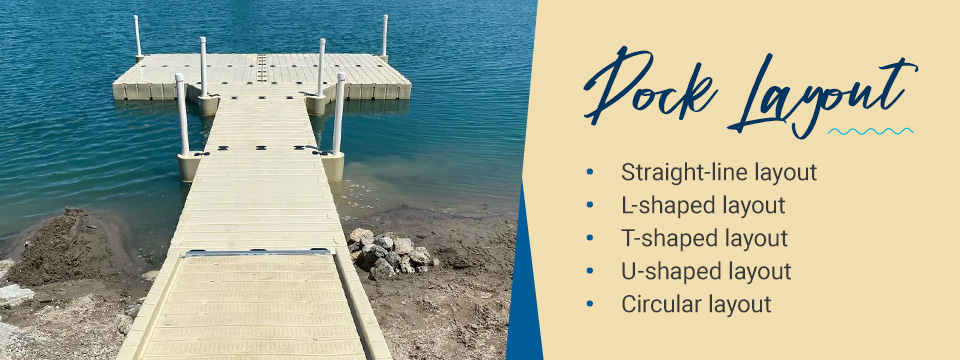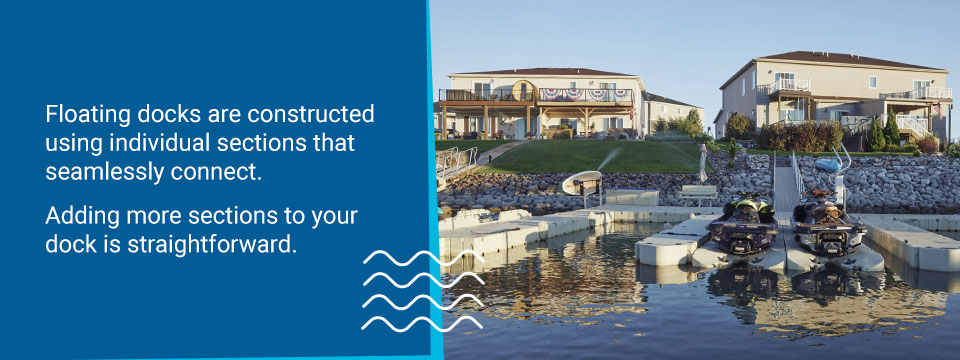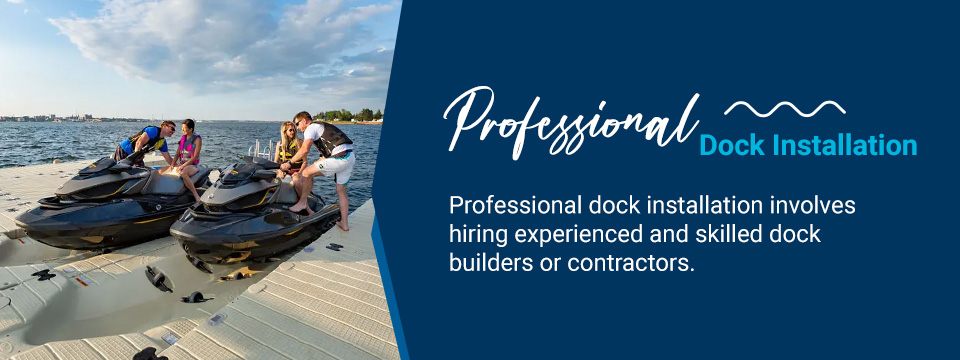Filters
Why You Should Invest in More Dock Space
Picture yourself basking in the warm glow of the setting sun, the tranquil waters gently lapping against the hull of your boat as you relax on a spacious and inviting dock. The idyllic scene epitomizes the allure of waterfront living, where cherished moments with family and friends intertwine with the boundless beauty of the water.
While a dock may initially seem like a simple wooden platform, it holds the key to unlocking a world of endless possibilities. This article will explore why expanding your dock space is a wise and rewarding decision. From accommodating more watercraft and providing space for unforgettable entertainment to prioritizing safety and offering abundant storage, the advantages of investing in more dock space are as diverse as the endless waves that lap upon its edges.
Reasons to Invest in a Bigger Dock
Investing in more dock space is a decision that will elevate your boating lifestyle to new heights. The benefits of increased watercraft capacity, ample entertainment space, enhanced safety measures and functional storage facilities speak for themselves.
Let us present the compelling reasons why investing in more dock space is wise and rewarding for you:
- Safety: A larger dock contributes significantly to safety enhancement. You can establish clear pathways with ample space, reducing the risk of tripping and falling accidents. Adequate room to maneuver also makes docking and undocking safer and more manageable, minimizing the chances of collisions or injuries. Moreover, a larger dock provides enough distance between boats to prevent accidental damage during docking maneuvers and severe weather conditions.
- Storage: An extensive dock offers an excellent opportunity to incorporate functional storage facilities on the water. You can keep your boating essentials organized, secure and easily accessible, from weatherproof cabinets to storage lockers and dedicated compartments. More storage can declutter your property and protect your valuable investments from potential damage caused by exposure to the elements.
- More space for watercraft: One of the most apparent and immediate benefits of expanding your dock space is the increased capacity for watercraft. A larger dock enables you to moor multiple boats, jet skis or other watercraft simultaneously, saving you the hassle of constant shuffling or overcrowding. With extra space, you’ll have the flexibility to welcome guests and their boats, fostering a sense of camaraderie and shared experiences.
- Spot for entertaining: You can design a comfortable seating area for al fresco dining, install a barbecue grill for delightful waterfront cookouts or set up cozy lounging spots for relaxation. Furthermore, a larger dock can serve as an excellent space for various social activities, from hosting cocktail parties to celebrating special occasions.
6 Benefits of Choosing a Floating Dock
Choosing a floating dock is a decision that grants you the gift of convenience, versatility, quality and competitive pricing. Below are a few benefits of additional dock space you can expect from expanding your floating dock:
1. Quality and Durability
Floating docks are crafted with meticulous attention to detail and constructed using high-quality materials. Advanced engineering ensures that these docks can withstand the rigors of the water, such as fluctuating water levels, waves and varying weather conditions. Whether navigating calm waters or facing occasional storms, rest assured that your floating dock will endure and continue to provide unwavering support and stability.
The materials used in floating dock construction, such as UV-resistant polyethylene or reinforced aluminum, are chosen for their durability, longevity and resistance to corrosion and decay. As a result, your investment in a floating dock is not just for the short term but rather a durable, long-lasting addition to your waterfront property.
2. Low Environmental Impact
Compared to traditional fixed docks, floating docks have a lower environmental impact. They do not disrupt the natural flow of water or interfere with aquatic ecosystems and sediment movement. Floating docks are often environmentally friendly, as they allow sunlight to penetrate beneath the dock, supporting the growth of aquatic vegetation and benefiting local aquatic life.
3. Convenience and Expandability
Unlike traditional fixed docks, which require significant modifications for expansion, a floating dock allows you to add extra space at any time effortlessly. Whether you need more room to accommodate additional watercraft, entertain larger gatherings or introduce exciting new features, a floating dock’s modular design makes it a breeze to adapt and grow your dock according to your needs.
4. Seamlessly Connect Add-Ons and Features
A floating dock’s design seamlessly integrates a wide range of add-ons and features, making it an ultimate hub of aquatic entertainment. From jet ski ports and kayak launch platforms to waterslides, swim ladders and fishing stations.
With easy-to-install accessories, you can personalize your floating dock to cater precisely to your favorite aquatic pastimes. Moreover, technological advancements have led to innovative add-ons, such as solar-powered LED lighting and weather-resistant sound systems, transforming your dock into a captivating oasis both day and night.
5. Easy Winterization and Storage
During winter or when it’s not needed, you can easily remove your floating docks from the water for storage. This winterization involves detaching the dock from anchoring points and pulling it ashore, protecting it from ice and harsh weather conditions. The ability to store the dock during off-seasons helps extend its life span and reduces exposure to potential damage.
6. Competitive Pricing
Contrary to what some may believe, floating docks offer a cost-effective solution compared to traditional fixed docks. While the initial investment might be slightly higher, the long-term benefits more than make up for the difference. Expanding and adding features without the need for extensive construction and reconstruction means you can gradually tailor your floating dock to suit your budget and preferences over time.
Moreover, a floating dock’s durability and low maintenance requirements translate to cost savings in the long run, as you won’t be burdened with frequent repairs and replacements. When evaluating the overall value of your investment, a floating dock undoubtedly emerges as an economical and wise choice.
What Is the Ideal Dock Size?
Crafting the perfect dock size is a decision that requires consideration of various factors. The ideal size of your dock is a delicate balance between your intended uses and the available waterfront space. A dock that’s too small may not accommodate all desired activities, while one that’s too large might disrupt the natural flow of your property.
To determine the ideal size, consider the number and kinds of boats and watercraft you intend to moor, the frequency of social gatherings and other potential uses of the dock. By understanding the purpose of your dock, the characteristics of your waterfront, local regulations and the available space, you can create a dock that perfectly complements your lifestyle.
Dock Purpose and Uses
Consider the activities you envision on your dock — will it serve mainly as a recreational boating hub, a fishing hotspot, a swimming oasis or an entertainment space for gatherings? Each purpose requires a different layout and amount of space.
A larger dock accommodates multiple watercraft comfortably, including features like docking aids, boarding platforms and seating areas that enhance the boating experience. On the other hand, a smaller dock with strategically placed fishing stations and rod holders is ideal for avid anglers. Here are some common purposes and uses of docks:
- Boat docking and mooring: One of the primary purposes of a dock is to provide a safe and secure space for boat docking and mooring. Docks offer a stable platform for boats to be tied up, preventing them from drifting away with currents or tides.
- Watercraft launching and retrieval: Docks also facilitate the launching and recovery of watercraft, such as boats, kayaks, canoes and jet skis. Instead of hauling your watercraft in and out of the water from a distant location, a dock provides a designated area for launching and pulling watercraft back onto the shore.
- Waterfront recreation and entertainment: Docks provide a versatile platform for various activities, whether hosting a waterfront party, family gathering or simply enjoying a quiet evening by the water.
- Fishing and water activities: For enthusiastic anglers, docks provide an ideal spot for casting a line and enjoying a leisurely day of fishing. They offer easy access to deeper waters with abundant fish, making it a prime location to get the best catch.
Shoreline and Water Type
The geographical characteristics of your waterfront significantly influence your dock’s appropriate size and layout. Understanding the shoreline type and water depth will dictate the anchoring and support system required for stability and durability.
- Rocky shoreline: A rocky shoreline consists of natural rock formations along the water’s edge. Building a dock on a rocky shoreline can present some challenges, requiring specialized dock construction techniques. Typically, dock builders use custom anchoring systems or attach the dock to secure rocks to create a stable foundation.
- Sandy shoreline: Sandy shorelines are characterized by soft, granular sand along the water’s edge. Building a dock on a sandy shoreline is relatively straightforward, as the dock can be anchored with pilings or augers penetrating the sand. Sandy shorelines provide an easier and less costly dock construction process than rocky shorelines. However, they may require occasional maintenance to prevent erosion and shifting.
- Muddy or soft soil shoreline: Building a dock on such shorelines may require additional measures to ensure stability, such as installing deep pilings or using specialized anchoring systems. Docks in muddy areas may also need periodic inspections and maintenance to prevent settling or shifting of the dock’s foundation.
- Steep shoreline: Constructing a dock on a steep shoreline can be challenging, but it is possible using piers or terraced platforms to create a level surface for the dock. A steep shoreline often offers the advantage of deep water access, making it suitable for docking larger watercraft.
Docks in freshwater locations generally face fewer corrosion-related challenges, but they may still be exposed to other environmental factors like changing water levels, debris and algae growth. High-quality materials that resist UV damage and degradation are recommended for freshwater dock construction.
Saltwater bodies like oceans, seas and saltwater estuaries have higher salinity levels. Docks in saltwater locations are subject to increased corrosion due to salt exposure. Therefore, using materials resistant to rust and corrosion, such as aluminum or stainless steel, is crucial for saltwater dock construction. Regular maintenance and freshwater rinsing can also help extend the life of a saltwater dock.
Local Regulations
Different jurisdictions have specific rules governing dock construction, including limitations on size, shoreline setbacks and environmental considerations. By aligning your dock design with local regulations, you ensure legal compliance and contribute to preserving your waterfront ecosystem. Engaging with local authorities or consulting professional dock builders can help navigate the permitting process and ensure your dock meets all necessary criteria.
Dock Layout
The layout of your dock is an integral part of the size consideration and revolves around optimizing the available space for different activities and features. Common layout options include T-shaped, L-shaped, U-shaped or straight-line designs, each offering distinct advantages.
Dock layout options refer to the different arrangements or configurations you can design for your dock. Your layout depends on your needs, waterfront property, intended uses and available space. Here are some common dock layout options:
- Straight-line layout: The straight-line layout consists of a straight path extending from the shoreline into the water. This design is ideal for properties with limited waterfront space or for locations where a direct path to deeper waters is desired. It allows for easy access to the water and straightforward docking of boats.
- L-shaped layout: An L-shaped dock features a main walkway extending from the shoreline, with a perpendicular section creating the “L” shape. This layout allows boats to dock alongside the perpendicular section, accommodating more watercraft or creating a designated area for swimming, fishing or other activities.
- T-shaped layout: A T-shaped dock is similar to the L-shaped layout but with an additional walkway extending in the opposite direction from the perpendicular section, forming a “T” shape. This layout offers even more space for boats to dock and provides convenient access from multiple directions. It can be a great choice for properties with expansive waterfronts or where multiple boat access points are desirable.
- U-shaped layout: A U-shaped dock surrounds a specific water area on three sides, leaving one side open for boat entry and exit. This layout offers a protected and enclosed space, making it an excellent choice for swimming areas, calm water zones or creating a private and secluded boating space.
- Circular layout: A circular dock layout features a central platform connected to the shoreline with a circular walkway. This aesthetically pleasing design provides a panoramic view of the surrounding water. It is suitable for properties with a circular or curved shoreline or where a unique and eye-catching dock design is desired.
Adding Sections to a Floating Dock
Adding sections offers a world of possibilities for expansion and customization for those who already own a floating dock. This section will explore how easy it is to expand your floating dock and create a dynamic and ever-evolving waterfront oasis.
Modular Design and Simple Installation
One of the primary advantages of a floating dock is its modular design. Floating docks are constructed using individual sections that seamlessly connect. Adding more sections to your dock is straightforward, thanks to the compatibility and interlocking mechanisms designed for easy installation.
The modular nature of floating docks ensures that the new sections integrate seamlessly with the existing dock, creating a cohesive and unified structure. With minimal effort and basic tools, you can expand your dock quickly, saving time and resources compared to more complex construction methods.
Expanding your floating dock allows you to tailor its size and configuration to suit your evolving needs. You can assess your existing dock’s layout and determine where additional sections would best fit to optimize space and functionality.
Accessory Integration
With the expansion of your floating dock, you can seamlessly integrate accessories to enhance the ambiance and functionality of your waterfront oasis. The expanded dock becomes a hub for various water activities and aquatic enjoyment, from boat lifts and jet ski ports to kayak launch platforms and swim ladders.
Furthermore, technological advancements have led to innovative dock accessories, such as solar-powered LED lighting and weather-resistant sound systems.
Professional Dock Installation
Professional dock installation involves hiring experienced and skilled dock builders or contractors to design, construct and install a dock on your waterfront property. Here are the key aspects of professional dock installation:
- Quality materials and construction: Professional dock builders use high-quality materials suitable for the specific water type — freshwater or saltwater — and the property’s characteristics. They ensure the dock is constructed to withstand the elements, including exposure to UV rays, water and potential impacts from boats and watercraft.
- Safety measures: Dock builders implement safety features such as non-slip surfaces, sturdy handrails and properly spaced deck boards to reduce the risk of accidents and injuries. They also ensure the dock’s stability and buoyancy, considering factors like water depth, fluctuating water levels and local environmental conditions.
- Customization and accessories: Professional dock builders offer a range of customization options to tailor the dock to the property owner’s preferences. This includes integrating various dock accessories and add-ons, such as boat lifts, swim platforms, benches and storage units, to enhance the dock’s functionality and aesthetics.
- Warranty and customer support: Reputable dock builders often provide warranties on their workmanship and materials, giving property owners peace of mind and assurance of the dock’s quality. They also offer ongoing customer support to address any questions, concerns or maintenance needs that may arise after the installation.
EZ Dock Guarantees Your Perfect Dock Size
We at EZ Dock understand the importance of a durable, long-lasting dock that enhances your water-loving lifestyle. Driven by a passion for innovation and sustainability, our founders introduced the world to EZ Dock — a revolutionary floating dock system designed for longevity and minimal maintenance.
With an EZ Dock modular design system, adding sections to your existing dock becomes a breeze, allowing you to seamlessly expand and adapt your waterfront oasis to suit your evolving needs. Our docks are crafted using high-quality materials that endure the rigors of the water, ensuring a dock that stands strong against the elements and continues to deliver unparalleled performance year after year.
At EZ Dock, our mission remains unwavering — to provide a dock that allows you to make the most of your time on the water, surrounded by beauty and tranquility. Request a quote to learn more about having us as your trusted partner in your water-loving adventures. With EZ Dock by your side, your waterfront oasis knows no bounds.

